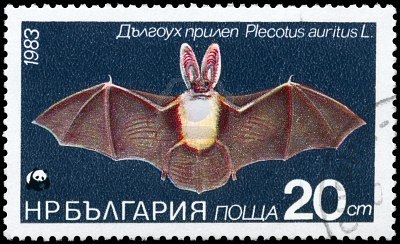We have been pondering on the significance of the laboratory evidence from Bee Researchers in France and the US that the administration of tiny amounts of a systemic neonicotinoid, imidacloprid, to bees was associated with a weakening of bee immunity, such that they became more susceptible to bee diseases. and decided to look more closely at the patterns of recent deaths/epidemics in the UK, Europe and the US, involving a variety of other wildlife. In March 2009 (published Feb 2010), Puechmaille et al. found the White-nose Syndrome Fungus (Geomyces destructans) on a single bat in a cave in France, but without other evidence of disease [1]. They raised the possibility that the fungus was not the primary cause of death “but acts as an opportunistic pathogen in bats already immune-compromised by other pathogens such as viruses or bacteria”.
In a German-led multicentre study published in Emerging Infectious Diseases in August 2010, hibernating bats with obvious fungal growth were sampled in Germany, Switzerland and Hungary [2]. Despite laboratory confirmation that these bats were colonised by Geomyces destructans, at that time deaths were not observed. The researchers said “bats in Europe appear to coexist with G. destructans” They thought that the European bats might have been exposed to the fungus for a longer time and therefore had developed immunity to it. They also stated: “Although we have searched the literature describing observations in hibernating bats, we have been unable to find any similar historical accounts of white fungus growing on live hibernating bats before the recent emergence of WNS”. In May 2010, Professor Paul Racey, Founding Chairman of the UK Bat Conservation Trust and Visiting Professor at the University of Exeter Centre for Ecology & Conservation, said that although the fungus “has been found in Europe at this point we don‟t have a mass mortality, we just have the fungus” [3]. However, by November 2010, a report from the Czech Republic and Slovakia said that the numbers of hibernation cave sites in which the fungus was found were increasing rapidly, from 33 at the beginning of winter to 76 at the end, and they said that sickness was starting to occur in some of the bats [4]. In fact, from 2008 bat populations had started to decline, so perhaps the disease was already affecting them at that time.
References:
[1] Puechmaille, S.J., Verdeyroux, P., Fuller, H., Ar Gouilh, M., Bekaert, M., Teeling, E.C. (2010) White-nose Syndrome Fungus (Geomyces destructans) in Bat, France. Emerging Infectious Diseases 16: 290-293.
[2] Wibbelt, G., Kurth, A., Hellmann, D., Weishaar, M., Barlow, A., Veith, M., Prüger, J., Gorfol, T., Grosche, L., Bontradina, F., et al. (2010) White-nose syndrome fungus (Geomyces destructans) in bats, Europe. Emerging Infectious Diseases 16: 1237-1243.
[3] www.dailymail.co.uk 24 May 2010.
[4] Martínková, N., Bačkor, P., Bartonička, T., Blažková, P., Červený, J. et al. (2010) Increasing incidence of Geomyces destructans fungus in bats from the Czech Republic and Slovakia. PLoS One. e13853.
Authors:
Dr Rosemary Mason, MB, ChB (Hons), D.Obst. RCOG, FRCA.
She worked in the UK National Health Service for about 35 years in: General Hospital Medicine and Obstetrics 3 years; Training in Anaesthetics and Intensive Care 8 years; Consultant Anaesthetist (Anesthesiologist) 25 years. Author of Anaesthesia Databook; A perioperative and peripartum manual (600 pages) as a practical resource for trained anaesthetists. 1st edn. 1989, 2nd edn. 1994, 3rd edn. 2001; reprinted in 2009.
Assistant Editor of Anaesthesia, Journal of the Association of Anaesthetists of Great Britain and Ireland, 1990 – 2000.
Palle Uhd Jepsen, former Senior Adviser in Wildlife Management and Nature Conservation for the Danish Forest and Nature Agency, Ministry of the Environment. Research on the feeding ecology of goldeneye. Before his retirement he was a member of the Danish Delegation on the Ramsar Convention on Wetlands, International Whaling Commission, Bonn Convention on Migratory Species, ASCOBANS (Agreement on Conservation of Small Cetaceans in the Baltic and North Sea) and Wetlands International. Adviser on Site Management for International Projects in Thailand, Malaysia, Belarus, Northern Ireland and Estonia. Author of several books on natural and cultural history in Denmark; also natural history in the Arctic.
27th May 2011

- Login om te reageren
